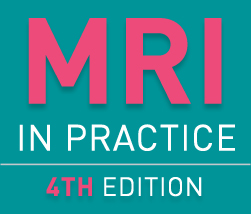SAQs - Chapter 5
1. Explain why RF spoiled pulse sequences are not the best choice when T2* weighting is required.
RF spoiling eliminates residual transverse magnetization that causes increased T2* weighting.
2. How does balanced gradient echo differ from coherent gradient echo?
Balanced gradients on all three axes, large flip angle with alternating phase.
3. What parameters are used in FLAIR sequences and why?
Long TI to suppress CSF, long TE to enhance T2 weighting, long TR to allow full recovery of spins from saturation.
4. What are the effects of lengthening the turbo factor in fast spin echo?
Shorter scan times, more T2 weighting, fewer slices per TR.
5. In which sequence is the stimulated echo only sampled?
In SSFP the stimulated echo only is sampled.
6. When using parallel imaging, how many coils or channels should you use to halve the scan time compared with normal sequencing?
Two coils or channels.
7. What types of echo are sampled during SS-FSE?
Spin echoes.
8. What types of echo are sampled during EPI readout?
Gradient echoes.
9. How are gradient echoes rephased in an EPI readout acquisition?
By oscillation of the frequency encoding or readout gradient.
10. Which tissues are likely to be bright in a steady state sequence and why?
Water and fat as these tissues have a parity between their T1 and T 2 relaxation times and this factor is the main contrast driver in steady state sequences.
11. What are the advantages of propellor K space filling?
Rapid imaging, increased SNR and CNR, reduced motion artefact.


